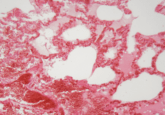Nanoparticles used to deliver cancer-inhibiting molecule

Metal-organic framework (MOF) nanoparticles have been used to transport a molecule that can disrupt gene expression in cancer cells.
Scientists from the University of Cambridge (UK) have utilized a type of nanoparticle – known as Metal-organic frameworks or MOF – to develop a platform capable of delivering small interfering RNA (siRNA) to cancer cells.
siRNA is a double-stranded RNA molecule capable of targeted disruption of gene expression via the interference of messenger RNA. In recent years siRNA has received increased interest from scientists hoping to exploit this capability.
Some cancers are caused by dysregulation of gene expression, causing over-production of vital regulatory proteins. This can have dire consequences on the cell cycle, affecting proliferation and cell death. siRNAs can be utilized to downregulate overexpressed oncogenes. If the sequence of the targeted gene is known, the corresponding siRNA can be synthesized and used to disrupt expression of the gene.
The issue with siRNA as a therapeutic treatment is delivery; it is unstable and the body can often initiate an immune response, which results in the siRNA being destroyed prior to reaching its target. An additional drawback of siRNAs is that they can sometimes interfere with the expression of off-target genes, causing unwanted side effects.
To develop an effective delivery system, a team of scientists led by David Fairen-Jimenez (University of Cambridge) used computational modelling to select an appropriate MOF – from the 84,000 available on the Cambridge Structural Database – that could be used to contain siRNA.
- Carbon nanotube fibers restore damaged hearts
- Novel CRISPR/Cas9 nano-carrier shows promise for therapeutic applications
- Cancer-fighting nano-robots
MOFs are 3D-crystalline structures composed of a metallic ion and organic linker molecule. They have regular pore structures and, due to their hollow internal structure, have incredibly large internal surface areas. Scientists can create MOFs with different desired properties by using different components.
“With traditional cancer therapy if you’re designing new drugs to treat the system, these can have different behaviors, geometries, sizes, and so you’d need a MOF that is optimal for each of these individual drugs,” explained Fairen-Jimenez. “But for siRNA, once you develop one MOF that is useful, you can in principle use this for a range of different siRNA sequences, treating different diseases.”
The team chose a biodegradable zirconium-based MOF. Once the siRNA is delivered it breaks down into non-toxic components that are recycled by the cell., Zirconium is inert, so there is no issue with it having adverse effects on the body.
One potential issue with using MOFs is that they can experience endosomal entrapment, meaning the cell’s defense mechanisms prevent them from entering. To negate this issue, the team engineered their MOF with additional components to ensure the siRNA-carrying MOF could enter the cell and reach its target.
The team utilized their delivery platform to knock down a fluorescence-producing gene, demonstrating that the MOF delivery system could be used to cause a 27% decrease in expression of the target gene.
MOFs provide a novel approach for the delivery of siRNA; however, further research will be needed to increase efficiency and develop siRNAs that can target hard-to-treat cancers.





